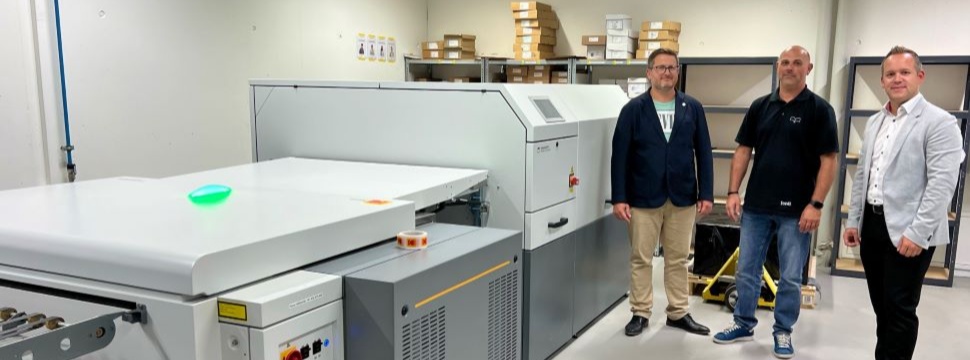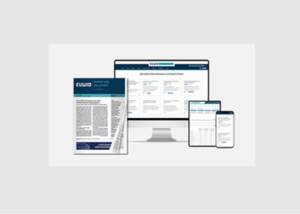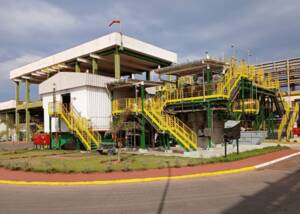Jordi AG relies in new offset era on highly automated CTP, workflow and process-free plates from Kodak
News General news
To stand still is to fall behind – this is especially true in printing, which is characterized by ever-changing technologies, market trends and customer requirements. For Jordi AG, based in Belp near Bern, Switzerland, this means regularly investing in more efficient and more highly automated technologies to improve its competitiveness and profitability and offer its customers new services.

Founded in 1897 as a family-run firm, Jordi is meanwhile in the hands of four Jordi brothers belonging to the fifth generation and employs 87 people. The portfolio’s main emphasis is on magazines, direct mail and other targeted print products. Part of the turnover is generated via printzessin.ch, the company’s bespoke web-to-print portal. Business and private clients can order from a wide range of products there including flyers, brochures, cards, posters, stickers and much more besides.
“We believe in print” is Jordi’s pithy motto that underscores the strict focus on print. As part of this strategy, Jordi has invested heavily in new technology recently, for instance by expanding its print embellishment capabilities with foil stamping, introducing robotics into post-processing and investing in a highly automated, eight-color Rapida 106 X sheetfed offset press from Koenig & Bauer with perfecting and an additional coater.
The latter investment in particular has direct impacts on prepress, where Jordi has made a major new investment in CTP, workflow and plate technology from Kodak. “Our new, eight-color press prints faster than our old one. It’s also quicker to set up thanks to more automation and because print runs are nowadays generally shorter, there’s a greater need for printing plates,” says Tim Jordi, the firm’s owner and Production Manager. “It was this situation, coupled with our desire to increase platemaking efficiency through automation, that prompted us to purchase a new CTP solution.” Depending on the season, the print shop uses between 100 and 200 plates per day, most of them in B1 format.
More CTP automation and productivity with Kodak
A KODAK MAGNUS Q800 Platesetter was chosen to replace Jordi’s aging model of the same type. The new MAGNUS Q800 Platesetter with X speed has a throughput of up to 45 plates per hour. “It was by no means a foregone conclusion that we’d opt for Kodak again this time round. We also had offers from other manufacturers. We carried out an internal evaluation, and once more it was Kodak that we found most convincing. Our experience with the quality of Kodak’s imaging technology and very consistent CTP performance, as well as the optimal value for money, were the deciding factors,” Jordi continues.
The new MAGNUS Q800 Platesetter is supplied with plates fully automatically by a Multi-Pallet Loader (MPL). For automatic loading, the MPL installed at Jordi can hold one pallet with up to 1500 plates plus an extra 100 plates in a cassette for the company’s second sheetfed offset press, a four-color model in 370 x 520 mm format. “CTP is much easier to plan with the MPL. It makes us more efficient and of course, there’s also the cost advantage. Our CTP operator can concentrate more on their actual work without having to wonder whether plates are due for reloading. Thanks to the automation options, they’ll be able to take on more coordination or technical planning tasks in the future,” explains Olivier Maier, who as Head of Media Production is responsible for platemaking.
To coincide with the new CTP generation, Jordi made the switch from another vendor’s prepress workflow with a long tradition at the firm to the KODAK PRINERGY Platform. When asked about his reasons for upgrading, Tim Jordi cites his desire to partner with a supplier whose workflow solution is open to connectivity with devices and digital presses from any manufacturer and provides opportunities for more automation. “PRINERGY makes us more flexible connectivity-wise. Not only that but Rules Based Automation (RBA) gives us a very helpful instrument for automating processes in line with our specific requirements, saving us a lot of time and money,” Jordi comments. “We have over 90% standard jobs,” Maier adds. “If we can standardize it, we’ll also be able to automate it using RBA. We’re expecting huge cost savings as a result. However, we’re still in the early stages, and we very much appreciate the ability to find a solution to any questions swiftly and unbureaucratically with local Kodak experts.”
The introduction of the PRINERGY Platform, which the company operates in a virtualized on-premise server environment, went hand in hand with the integration of the KODAK PRINERGY INSITE Prepress Portal (IPP). This web-based portal to the prepress workflow, which can be accessed 24/7, lets Jordi offer customers simple file submission to production, with the uploaded files immediately undergoing an automatic preflight check and refine process. Overall, INSITE supports both the print shop and its customers with an efficiently managed job proofing, correction and approval process.
Jordi also takes advantage of the options available for integrating the PRINERGY Platform with other systems. The JDF / JMF interface between PRINERGY and the printer’s Printplus MIS via the Business Link software allows print jobs to be created automatically during the production process. The status of jobs currently in production can then be monitored in the MIS environment based on JMF feedback. The LogoTronic control desk of the eight-color press is likewise supplied with data for automatic ink key presetting by the KODAK Workflow via PrintLink Software.
New eight-color press is the go-ahead for process free
The start of production on the new Rapida 106 X in Belp will mark another significant step forward for Jordi: instead of a conventional wet processed KODAK plate, as has been the norm up to now, the entire offset printing department will be switched over to KODAK SONORA XTRA Process-Free Plates. All of the equipment, labor and costs associated with traditional plate processing will then be eliminated.
“The ecological and sustainability aspect is increasingly a criterion in today’s society, and we want to set an example here with our production processes. The fact that, courtesy of the SONORA XTRA Plate, we’ll no longer have any chemistry to contend with in prepress and we’ll also cut our energy and water consumption quite considerably fits in well with that,” Jordi claims. He goes on to describe how the transition will be completed without any prior test runs with SONORA XTRA Plates: “We’ve heard about the positive experiences of so many other printers and we trust Kodak from our own previous experience. We’re confident that neither quality nor productivity will be compromised in any way. On the contrary, we anticipate that our switch to SONORA XTRA will pave the way for improved process reliability, absolutely minimal errors and more efficiency all-round.”










